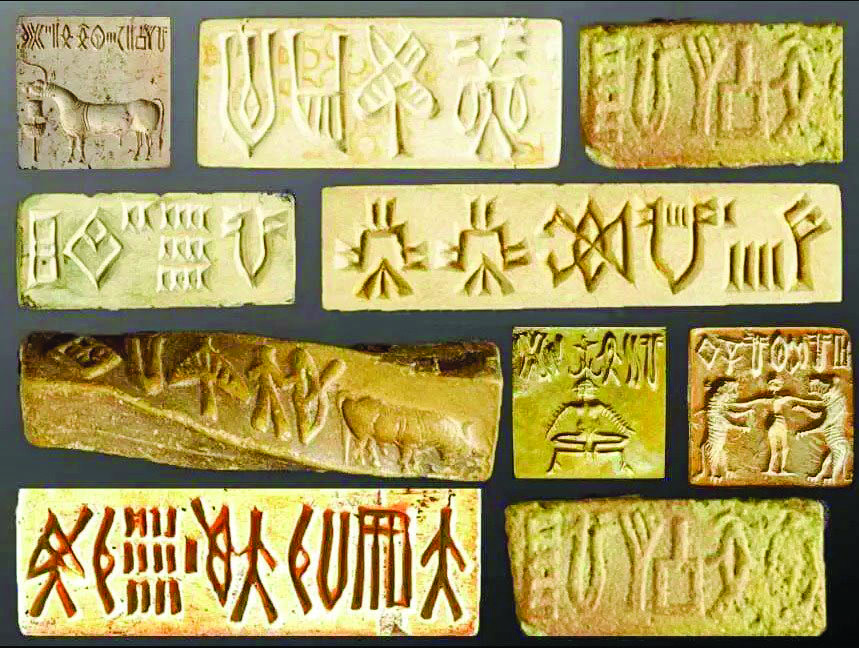The early researchers on Indology viewed enormous variety in different segments of cultural traditionsin this ancient land, both tangible and intangible, with great amazement. From tangible arts including paintings, sculpture, handicrafts, architecture, metallurgy, town-planning to music, literature, poetry, epical narratives, philosophy, mathematics, medicine, and many more intangible forms, the depth and nuances were overwhelming. These traditions kept evolving, changing and some becoming extinct. The researchers also noticed and encountered a large number of languages and forms of expression across the sub-continent. One aspect that intrigued all was how such wide variations in the languages keep the subcontinent vibrant and united in fundamental values – the ancient legacies, the sanatan, intact.
Early efforts to enlist languages of the sub-continent were mostly limited to those having written forms. The earliest linguistic survey of India (LSI) was done by John Abraham Grierson, a Civil Servant, who could get a grant for his project in 1891, after years of intense persuasion. The laboriously prepared Report saw the light of the day in 1928. It listed some 384 languages and dialects. However, during the post-independence period, systematic efforts were made to study the tribal languages, and particularly those which did not have any script or written form and it was only after Independence that more systematic studies were conducted.In the 1961 census, about 1652 languages were identified with the criteria that it is spoken by at least 10,000 or more people.The 2001 Census listed 122 major and 1599 other languages.
Subsequent enumerations have shown that today more than fifty percent of the languages that did not have a written form are not traceable. Fears have been expressed that, at this rate, in the next four or five decades, most of the tribal languages will be extinct. Bhasha Trust of Vadodara, on its site, prominently displays the concern, saying: When a language dies, something irreplaceable dies.
Besides the lack of financial or developmental support under the Constitution, the other reason for this colossal loss of India’s intangible heritage is the present education system that recognizes limited mediums of studies, mostly in the languages listed under the Seventh Schedule. As a result, even the tribals, as they move forward in life interlaced with modern day
Just to cite an example of the last member of the Bo tribe of Andamans, Boa Senior died in 2010. With her death, the 65,000-year-old legacy ended, and the Bo language slipped beyond the event horizon forever. Bo were perhaps the oldest of the human cultures.
Language is not just a means of expression. It also beholds several beliefs, myths, legends, songs, practices, knowledge, traditional wisdom, and oral traditions. Folk traditions are built around these, and pass from generation to generation, retaining some flavor of the legacy with each successive transition. With the onslaught of so-called modernization, some chirping of the traditional edifice of culture is inevitable. But the major question is – how to prevent it from a complete slide and final extinction.
Recognizing that the onslaught of fast-paced technological adaptations and ‘economic progress’ can be a disaster for many traditional forms of arts and culture, UNESCO pursued and adopted the Convention for Safeguarding Intangible Cultural Heritage in December 2003. Under the Convention, several intangible forms of India, including Kutiyattam Sanskrit theatre, Tradition of Vedic Chanting, Ram Lila, Ramman (ritual theater of Garhwal), Chhau Dance, Kalbelia, Mudiyettu, Buddhist Chanting, Sankirtan, Copper Craft, Navroz, Yoga, KumbhMela, Durga Puja and Garba have been inscribed. However, the list does not include any of the old languages.
Perhaps some quick steps will help in slowing down the extinction of these spoken-but-not-written languages. First is the enlisting of thesemarginal linguistic forms by conducting a comprehensive survey. The second would be to make extensive digital recordings of lesser-known ones, facing faster extinction, on the lines of the tradition of Vedic chanting, which has been undertaken after its enlisting by UNESCO. And finally, these invisible languages can be provided with a script.
Towards this last suggestion, laudable initiatives have been taken by Bhasha, who have taken initiative to introduce scripts to several oral languages and digitize their traditions. Yet, a great deal is required to be done in this regard. This is perhaps also a major cultural segment needing attention, where the corporate world can also step in with their rich professional and financial resources, including the CSR kitty.
Perhaps, with these tiny steps, we may be able to save in India many Bo languages, sitting on the periphery, from extinction in the days to come.
Neeru Misra is former Director, ICCR and head, Department of Museum Studies, National Museum Institute.

